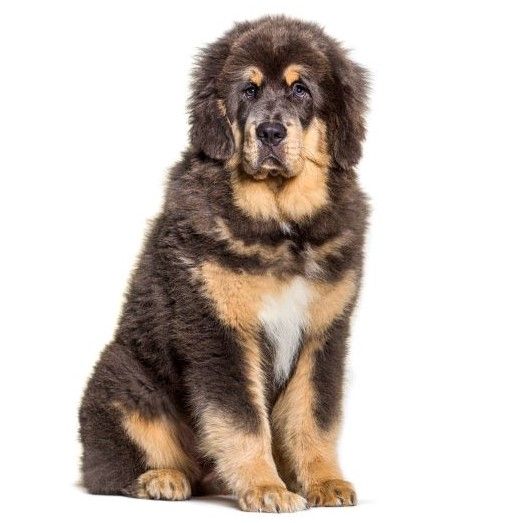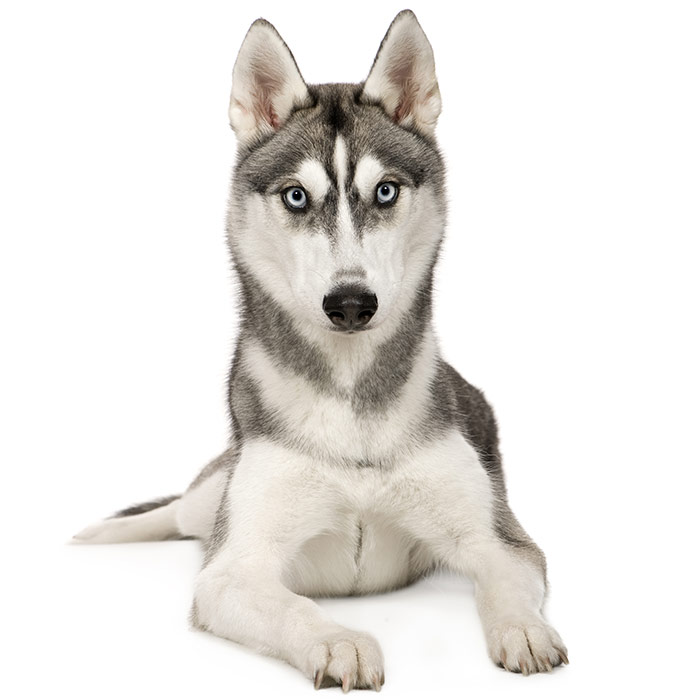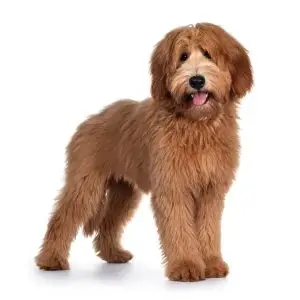Australian Cattle Dog
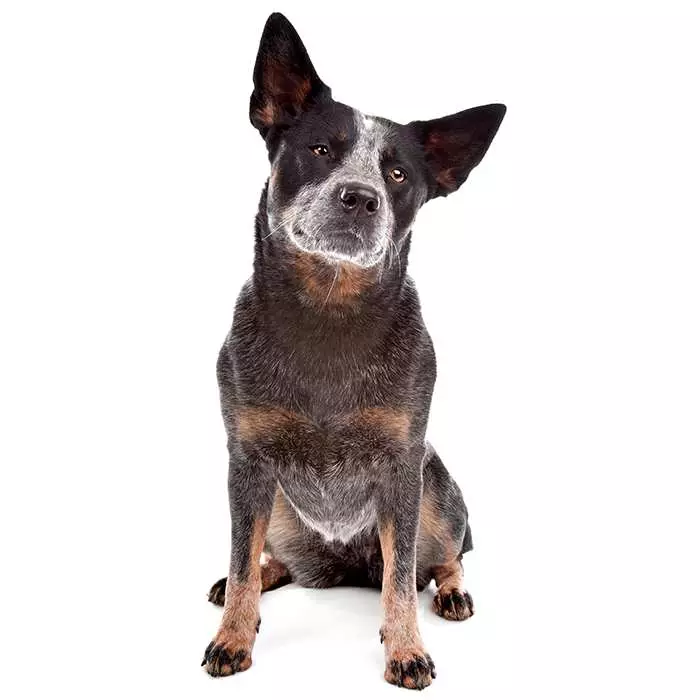

| Recommended for | Active families with older children |
| Breed Classification | Herding group |
| Other names | ACD, Blue Heeler, Red Heeler, Queensland Heeler |
| Lifespan | 12 to 16 years |
| Size | Medium |
| Temperament | Loyal, protective, independent |
| Intelligence | Very high |
| Tendency to bark | Low |
| Maintenance Level | Very high activity needs, low grooming |
| Health Risk | This breed has an around average probability of having health issues in its lifetime, hence it is one of the more affordable breeds to insure. |
Insuring an Australian Cattle Dog?
Get our award-winning Nose-to-Tail Cover with up to $30k annual benefit limit, up to 90% of eligible vet bills back, and no sub-limits.
Get a quick quote
Is this breed right for you?
Try our breed selector quiz to find out your best matching breed!
Insuring an Australian Cattle Dog?
Get our award-winning Nose-to-Tail Cover with up to $30k annual benefit limit, up to 90% of eligible vet bills back, and no sub-limits.
Get a quick quote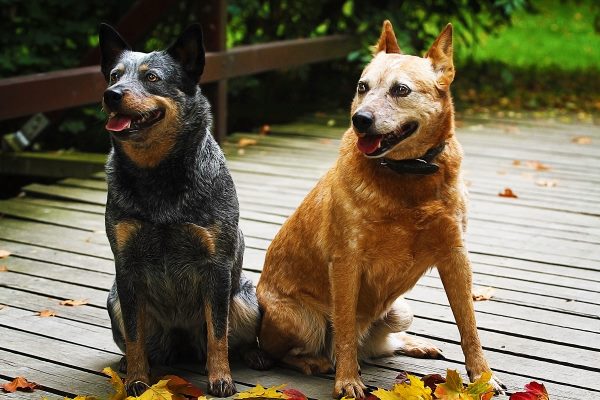
Breed history of Australian Cattle Dogs
The first cattle dogs used in Australia were British imports of a breed known as the Smithfield, which was poorly suited to the harsh climate, rough terrain, and vast distances they were required to cover. Therefore, in the 1830’s, stockmen began a long process of trial and error to breed a hardy and hardworking herding dog that could overcome the challenges of the Australian conditions.
To this purpose, they crossed Smithfields with the native Dingoes and other breeds such as the Scottish Highland Collie. Many decades of selective and careful breedings, including the introduction of the Black and Tan Kelpie and the Dalmatian, finally resulted in the present-day Australian Cattle Dog. This breed has worked diligently alongside their owners over many years to develop the beef industry in Australia and is considered by some to be the first successful Australian dog breed.
The popular blue cattle dogs tended to be called ‘Blue Heeler’, while the red cattle dogs of the breed were, not surprisingly, called ‘Red Heeler’. In Queensland they were given the names ‘Queensland Heeler’ or ‘Queensland Blue Heeler’. The term “Heeler” refers to how they nip at the heels of animals when herding.
In 1893, Robert Kaleski began breeding Blue Heelers for show. He drew up a standard for the breed which was approved by the Kennel Club of NSW in 1903. While the “Australian Heeler” was the first accepted name of the breed, it later became known as the Australian Cattle Dog.
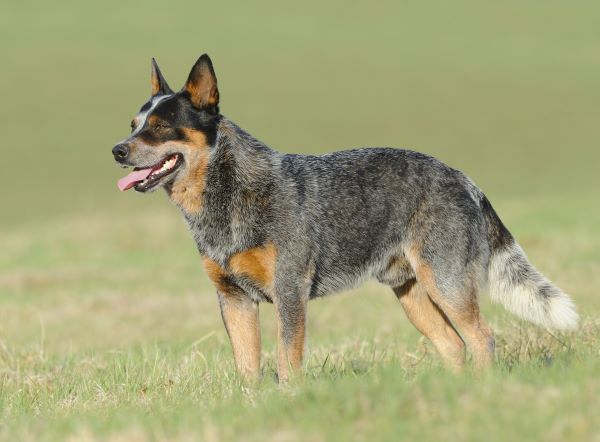
Physical description of Australian Cattle Dogs
Australian Cattle Dogs are working dogs with a sturdy, muscular build designed to maximize strength and endurance. Their oval eyes are dark brown, their ears are pricked and their tail is well brushed.
They have a smooth, double coat comprised of a short, dense undercoat and a close outer-coat, with each hair straight, hard and lying flat, making it water-resistant.
Australian Cattle Dogs are also known as Blue Heelers or Red Heelers, depending on their coat colour. Interestingly, they are born with a white coat that turns either blue-grey or red. Both coat colours may feature distinctive mottling or speckling patterns.
| Weight range | 15 to 22 kg |
| Height range | Male 46 to 51 cm; female 43 to 48 cm |
| Colours | Blue or red |
| Coat length | Short to medium |

Australian Cattle Dog personality and temperament
The Australian Cattle Dog is hard-working, dedicated, courageous, tenacious, alert and independent. Possessing a natural aptitude in the working and control of cattle, it is an ideal herding dog. ACDs do not make good sedentary house pets and require a job as an outlet for their high-energy personality.
Fiercely devoted and loyal, Australian Cattle Dogs often bond strongly to one person and will object to being separated from them. Generally friendly and eager to please their owner, they love nothing better than to be able to spend time in their special human’s company, doing whatever task is asked of them.
Australian Cattle Dogs are highly intelligent and can routinely outsmart their owners. If they aren’t challenged, they easily becomes bored and may get into mischief, for example digging, pulling washing from the line, pruning trees, landscaping or jumping fences. ACD’s can sometimes be very stubborn or mischievous, and owners need to be firm without being cruel as this breed does not learn through harsh treatment.
Their loyalty and protective instincts make them self-appointed guardians of their owners and property. They are curious but wary of strangers and will protect the family and possessions with their life if necessary. While they make excellent watch dogs, they may allow strangers on the property, but when they turn around to leave, ACDs have a tendency to nip from behind. They are not naturally aggressive, but if provoked or cornered can become so.
Australian Cattle Dogs do well in hot or cold climates and can live outdoors with adequate shelter, but they also enjoy being indoors with their owners. While they can be very active and vocal at times, they can thrive in a suburban household as long as their exercise and mental stimulation requirements are met. They are not well suited to apartment living or in a small living space/yard.
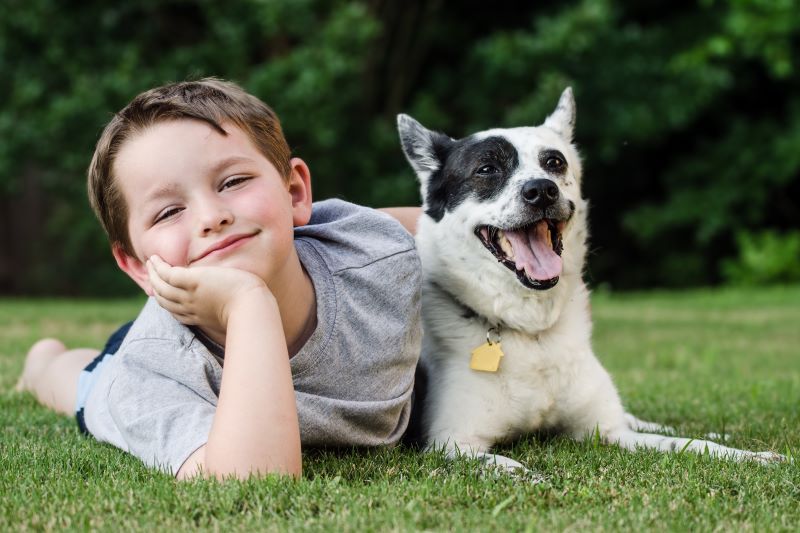
Australian Cattle Dogs with kids and other pets
Australian Cattle Dogs are playful and enjoy the high-energy companionship of children. However, they should always be supervised when around younger kids. Given the breed’s naturally tendency to nip and herd, they will try to herd small children and have been known to nip running children. Sometimes they are unsure around children and may perceive them as threatening, especially if they are unknown to the dog.
This breed must be socialised with other animals and people from an early age and throughout their life. They will get along with other dogs if they have been raised with them from puppyhood. The same applies for cats they have been raised with, but they may chase and kill unfamiliar cats and small animals.
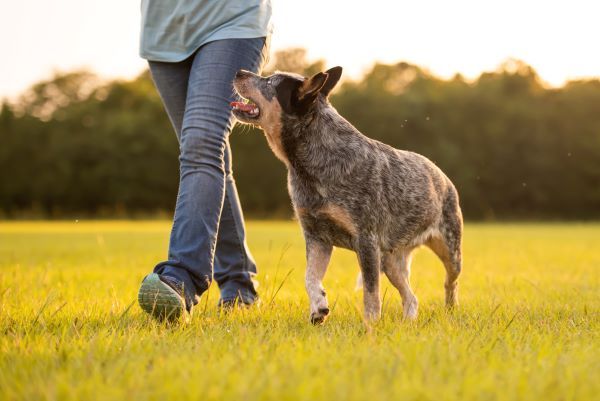
Australian Cattle Dog training and exercise
Australian Cattle Dogs have immense work drive and high exercise needs, and are best suited for families with an active lifestyle and a large fenced yard. Their boundless energy and supple gait means that they need more than just a quick walk and playtime in the yard.
ACDs really need a job in order to remain happy and healthy, and on a working farm, this may not be an issue, especially if there are animals to herd. In other living situations, it is recommended that owners participate with these versatile dogs in some work, dog sport, or regular exercise to keep them mentally and physically fit. They make excellent running partners and do best with extended sessions of running, jogging, frisbee, fetch, obedience or agility training or other canine activities that channel the breed’s drive and abundant energy in a fun way.
Australian Cattle dogs are highly intelligent dogs who are easy to train. Early socialisation and obedience training are a must for the breed. Remember, an intelligent, energetic dog who is not kept occupied will become bored, and a bored, energetic dog can be destructive. ACDs can be considered “mouthy” in that they tend to nip or bite, but this behaviour can be redirected with proper training and socialisation.
| Energy level | Very high |
| Exercise requirements | Very high |

Australian Cattle Dog feeding and nutrition
The Australian Cattle Dog should be fed a premium, high-quality dog food appropriate to the dog’s age (puppy, adult, or senior), size and activity level.
Australian Cattle Dogs that lead very athletic, active lifestyles will require more nutrition than those that are more sedentary, and may need an increase in amount of food or extra meals on days where they exert a lot of energy. ACDs that aren’t sufficiently exercised may become overweight, so watch their calorie consumption and weight level and don’t overindulge in the treats department.
Always check with your vet if you have any concerns about your dog’s weight or diet.
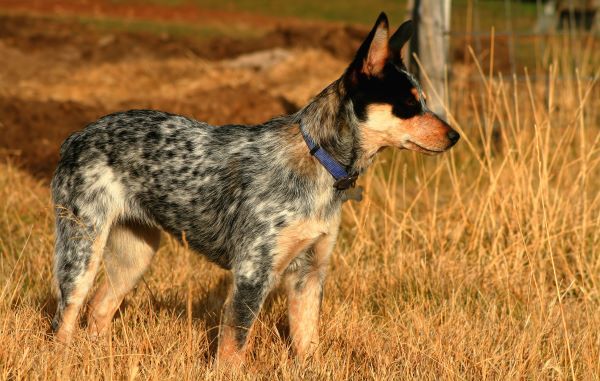
Australian Cattle Dog care and grooming
Australian Cattle Dogs were bred to work outdoors and have a smooth, double-layer coat that protects them from the elements. Their naturally short coat has no odour or oily residue, so generally needs just a quick brushing a couple of times per week and an occasional bath.
ACDs shed their undercoat twice a year. During shedding season, every few days they will need a thorough brushing-out to remove the dead hair, using a short-bristle brush or comb.
Health issues for Australian Cattle Dogs
- Hip dysplasia is a common condition in many breeds, particularly larger ones. In this condition, the thighbone and hip socket do not fit together properly, causing a laxity in the joint that can lead to pain and lameness. Arthritis can develop later in life as a result of the condition.
- Progressive retinal atrophy refers to a family of eye conditions which result in the deterioration of the retina at the back of the eye. In the early stages, dogs may lose their sight at night, and then gradually lose their sight during the daytime too. Most dogs, however, adapt to their vision loss very well unless faced with new or changing environments.
- Von Willebrand’s disease, a condition which impedes the blood’s ability to clot, can lead to excessive blood loss post-surgery, as well as nosebleeds, bleeding gums or blood in the stomach. It is currently incurable, and blood transfusions are the only treatments available. Most dogs suffering this disease can lead normal lives, and there are tests available to determine if your pet has it.
- Deafness occurs in Blue Heelers and can be detected from as early as four weeks of age. If you believe your Blue Heeler is suffering from a loss of hearing, your vet can perform some tests to determine the severity of the situation.
Not all conditions are covered by Pet Insurance. For details of Bow Wow Meow Pet Insurance cover, refer to the Product Disclosure Statement.
Thinking about insuring an Australian Cattle Dog
Thinking about insuring an Australian Cattle Dog
Learn moreThinking about insuring an Australian Cattle Dog
Learn moreFree engraved pet ID tag on sign up3
Customer Satisfaction
21 day cooling off
Easy to use Pet Portal

GapOnly® in vet claims
More Information:
Australian Cattle Dog Society of NSW Inc: https://www.acdsocietynsw.com/
Australian Cattle Dog & Kelpie Club of Queensland: http://www.cattledog-kelpieclubqld.com/
Australian Cattle Dog Society of VIC: http://cattledogclubvic.com/
Australian Cattle Dog Rescue: http://australiancattledogrescue.com/
Australian Working Dog Rescue: http://www.workingdogrescue.com.au/

